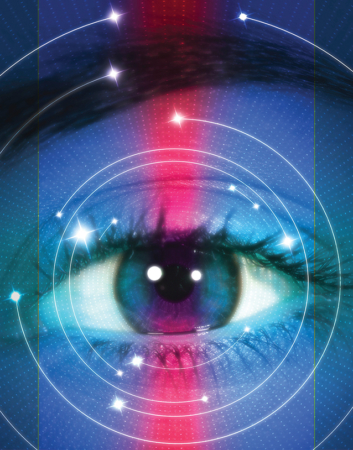Cataracts are the most common cause of vision loss among people age 40 and older. According to All About Vision, cataracts also are the principal cause of blindness in the world.
There are more cases of cataracts worldwide than there are glaucoma, macular degeneration and diabetic retinopathy, states Prevent Blindness America. Fortunately, cataracts are easily recognized and treated.
What are cataracts?
A cataract is a clouding of the lens in the eye that affects vision. The lens is the clear part of the eye that helps focus light — and images — on the retina. The lens must be clear to receive a sharp image. If the lens is cloudy, vision will be blurred.
Cataracts tend to form slowly. Initially, they only affect a small part of the lens, and they’re not very bothersome as a result. However, over time, cataracts can grow and impair vision. Seeing “halos” around lights, fading of colors, sensitivity to light, glare, and the need for brighter light for reading and handling tasks are common symptoms.
What causes cataracts?
Various things, including aging or injury to the eye tissue, can cause cataracts. Prior eye surgery, diabetes, long-term use of steroid medications, and inherited genetic disorders also can cause cataracts, says the Mayo Clinic. Smoking and alcohol use as well as consistent exposure to UV sunlight also may contribute to the formation of cataracts. With aging, the lenses in the eyes become less flexible, less transparent and thicker. Tissues within the lens can break down and clump together, clouding small areas within the lens of the eye, thereby forming a cataract.
Cataracts may be a subcapsular cataract, which occurs at the back of the lens. A nuclear cataract forms in the center of the lens. A cortical cataract starts in the periphery of the lens and works its way inward to the center.
Treating cataracts
Cataracts need only be treated if they are affecting vision severely or preventing examination or treatment of another eye problem. An eye care professional will discuss with patients if surgery is needed.
The National Eye Institute says surgery is safe and effective. In roughly 90 percent of cases, people who have undergone cataract surgery have better vision afterward. The surgery involves removing the clouded lens and replacing it with a clear, artificial one. The procedure is usually done on an outpatient basis and patients typically stay awake during the surgery.
Routine eye examinations are a key part of an overall health plan. They can shed light on the formation of cataracts and help people develop effective treatment plans.





Leave a Comment
Your email address will not be published. Required fields are marked with *